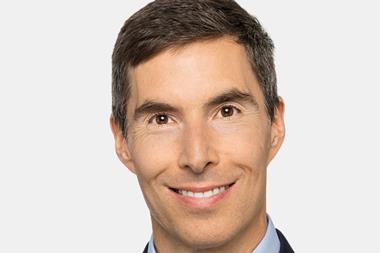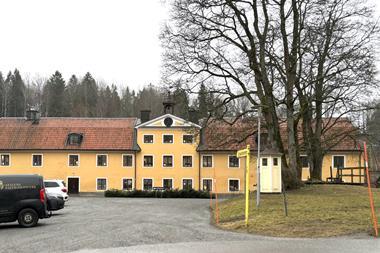Johan Bourdeaud’hui, director of the FBZ-FSE Electriciens pension fund
Now in its fifth year, the sector pension fund for electricians in Belgium is in the middle of a transition. The relatively young fund is changing from one where investment and administration is almost completely outsourced to one that takes control of its own investment
process.
Contributions started coming into the fund in January 2002, and assets were initially invested via an insurance company in a KB69 insurance vehicle, says Johan Bourdeaud’hui, director of the FBZ-FSE Electriciens pension fund.
The insurance vehicle will continue to be used until the end of this year, he says. But at that point, there will be changes in the way the fund invests.
“We are evaluating our options, and we have asked Esofac to do a study for us to determine what would be best for the next five years,” says Bourdeaud’hui. The next stage will also involve the use of an insurance vehicle, but one that gives the in-house pension fund staff more control.
“At the moment, the vehicle defines everything - which investments are chosen, how those investments take place, how the benefits are structured, how the reserves are used to sustain the vehicle,” he says.
The next vehicle is likely to be a ‘Branch 21’ vehicle, which will let FBZ-FSE, as organiser of the pension fund, decide which asset
managers it invests through. “We will still have the guarantee of the insurance company,” which the fund is legally required to have, he says. “But our impact on the investment situation will be much greater.”
“For us, this is a learning curve, and there is a logic to it,” says Bourdeaud’hui. The new vehicle will allow the fund personnel to learn more about the investment process. “We already have the resources to do all the administration that the pension fund involves,” he says.
It was decided that the pension fund would take 10 years, starting in 2002, to evolve in this way, because the social partners did not want to take any risks with the workers’ money, he says. “We have to have the experience and the know-how.” The tender was put out for the new Branch 21 contract end 2006.
Edwin Meysmans, managing director and pension fund secretary at banking group KBC
Brand new legislation improving the taxation of some pension fund investments is set to keep officials at the KBC pension fund busy for a while.
“My priority is to implement all these changes, with regard to changing the vehicle we use,” says Edwin Meysmans, managing director and pension fund secretary at the corporate pension fund in Belgium.
Pension funds have been given a five-year period in which to implement the changes, he says, but adds that most funds will be keen to do it quickly. “The tax regime for the new vehicle is much more interesting that the one we have now,” he says.
The new law has translated an EU directive on the activity and supervision of occupational pensions institutions into domestic law. With the legislation, commentators say the government has aimed to create a flexible legal and fiscal context for pensions to make Belgium attractive for pan-European
pensions.
All new Belgian pension funds will now have to be incorporated as the new vehicle, the Organisation for the Financing of Pensions (OFP), and existing funds have until 2012.
Governance is another issue the KBC pension fund will be addressing shortly. “We are expecting a circular from our supervisor on the governance of pension funds in a couple of weeks,” says Meysmanns. “It will definitely introduce changes for us,” he says. “There are things we already do, but we have to put them down on paper.”
There will be new functions required within the pension fund, he says. Each pension fund will have to have a compliance officer. This did not have to be a dedicated role, but any member of the board, for example, who took it on would have to be qualified in the legal field to act as a compliance officer, he says.
The new tax regime will prompt the KBC pension fund to re-think the structure of some of its investments, says Meysmanns. At the moment, up to 80% of investments at Belgian pension funds are in UCITS, partly because the vehicles are shields against withholding tax. But with the new OPF vehicle, there is no withholding tax to pay anyway.
“So you could in theory use direct investments,” says Meysmanns.
Hervé Noël, head of pension administration, Olivier Poswick, head of portfolio management at Suez-Tractebel
Harmonising and simplifying the pension schemes is a key theme for Belgian corporate pension fund Suez-Tractebel right now, says Hervé Noël, head of pension administration.
This is partly because of reorganisation at the company level, he says, although anti-discrimination issues are also making the changes necessary.
“This is really tricky as the laws dealing - directly or indirectly - with anti-discrimination are unclear,” he says, adding that the jurisprudence is scarce and the legislation dealing with scheme alteration rigid.
Apart from all of this, the pension fund is working on complying with the new law on the OFP and with the regulatory environment in general, he says.
“While we appreciate that the new tax treatment of the pension funds fully endorses the EET principle and that investment funds specifically designed for institutional investors can be developed in Belgium, we are afraid of an administrative framework that could become a deterrent, at least for small and medium-sized pension funds,” he says.
In most countries, banks, insurance companies and pension funds have the same supervisor, and this makes a lot of sense, says Noël. But “one size fits all” approach is not appropriate, he adds.
Looking ahead, and with defined contribution arrangements taking the lead, says Noël, the fund’s biggest challenge is to invest the money within long-term oriented strategies - diversified, stable, and with a good fee structure and follow-up of asset managers.
“This implies that the sponsor remains fully involved, although most of the risk rests on the members shoulders,” he says.
Right now, the fund has 33% of assets allocated to equities and 34.5% to investment grade bonds. The listed real-estate allocation stands at 7.5%, with 5% each in private equity, private real estate and infrastructure, convertible bonds and funds of hedge funds. Three per cent is in high-yield corporate bond and 3% in emerging markets debt.
The fund’s portfolio is built on the basis of a pragmatic combination of risk premium sources, says Olivier Poswick, head of portfolio management. This means the portfolio is broken down into beta (passive management) and alpha (active management, including a diversification of niche skills), and aims to avoid correlation with positions within it.
“Our approach of being cautious, and focused on the capital preservation, provides our portfolio with a Beta lower than one,” says Poswick. But more than this, it also has a capacity to resist economic shocks, which are increasingly caused by big institutions behaving similarly.
In 2006, Suez-Tractebel also made some small investments in the eastern European equity markets, in wind energy parks and a real estate fund focused on the residential and ‘homes for the elderly’ sectors, he says. “We are still looking for new small and well-diversified investments based on the skills and a pragmatic approach instead of traditional active asset managers,” he says.












No comments yet